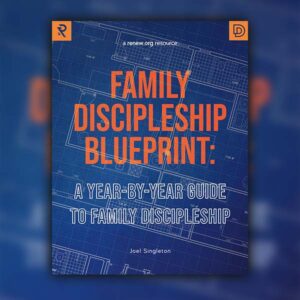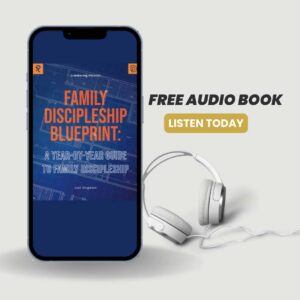6 Mission Critical Principles for Developing a Disciple-Making Middle School Ministry

Are middle school students capable of following Jesus and beginning to make disciples? What are the unique challenges we will face in our attempts to make disciples of middle schoolers?
Twenty-two years ago, when I joined the staff of Sonlife Ministries, I was tasked with customizing Sonlife’s Strategy Seminar for Jr. High ministry leaders. We did this by creating three break-out labs throughout the seminar on Winning, Building and Equipping for Jr. High Ministry. The Strategy Seminar is a deep dive into the life of Christ, the priorities He implemented, and the process He followed to produce the results that He did. Two thousand years ago, Jesus launched a disciple-making movement with teenagers. First, Jesus won the lost, inviting them to place their faith in Him as Messiah. Then, He built these new believers into growing disciples. Finally, Jesus equipped these disciples to minister to others and make more disciples. By the time Jesus ascended back to the Father, His disciples were prepared and positioned to multiply the movement.
Before exploring what effective winning, building and equipping can look like with middle school students, I’d like to lay the foundation with some mission critical principles for understanding this age group as we minister to them.
#1 The “Tween Zone” Principle
No longer a child. Not yet an adult. It’s a strange place to be! An eleven year old is a tweenager. They have entered puberty. Everything is changing. Their bodies are changing. Their voices are changing. Their emotions are changing. The way they think is changing. Their passions are changing. Their interests are changing. Their gifts and talents are emerging. Their sense of ownership and responsibility for their own life is developing. What is especially challenging is that the onset of these changes and the pace at which they take place is different for each middle schooler. One who develops more slowly than most of their peers gets left behind. One who develops far more rapidly than their peers feels equally out of place. It’s a hard place to be, in between childhood and adulthood. Because each middle schooler will find themselves somewhere on the broad spectrum of adolescent development, we must work to find ways to minister to the individual and not just the stereotype.
#2 The “Swinging Hinge” Principle
Middle School is the hinge between children’s ministry and high school ministry. In high school, students start doing adult-like things. Many learn to drive, get their first car, get a job, open a bank account, start saving for college, apply to and make decisions about which college to attend, or think about joining the military or the workforce right out of high school. What happens in middle school ministry must effectively build on the foundation that children’s ministry has laid, establishing a framework that prepares the middle schooler to flourish in their faith as they enter high school. How can we begin to help middle schoolers own their faith? What are the tools they will need during this hinge period to begin to practice their faith? What did Jesus prioritize early on with His teenage disciples, and how can we introduce and reinforce these priorities with our tweenagers? What is reasonable to expect in terms of disciple-making fruit? There is fruit we can see and savor during this hinge period. Then the fruit becomes even more significant in their high school and college years when disciple-making priorities have been adopted by students during middle school.
When I was a Jr. High Pastor, we developed a simple description of what a middle school disciple looks like. This was our target. We wanted to see our students Know Christ, Grow in Christ, and Show Christ to their friends.
- KNOW CHRIST
Know Christ. Come into a personal relationship with God by hearing, understanding, and responding to the gospel and believing in Christ.
- GROW IN CHRIST
Grow closer to Christ so you will become more like Christ. Grow closer to Him by reading the Bible, praying, and worshiping. Become more like Christ in the way you think, the way you speak and the choices you make.
- SHOW CHRIST
We show Christ to those around us by encouraging and serving others and by telling our lost friends about Jesus.
I fully believe that middle school students are capable of Knowing Christ, Growing in Christ, and Showing Christ to their friends!
#3 The “unSelfie” Principle
It’s during this time of development that kids become very self-aware. They are becoming hyper-sensitive to what others might be thinking of them. With rapid changes in their appearance, middle schoolers are very image conscious. I must admit. I’m not a fan of selfies. I don’t like to take them. I’m not good at taking them. And the solo-selfie is just weird to me. If I have to be in a picture, I want it to be a way of remembering the people I was with or what I was doing. But in middle school, students learn the art form of selfie-ing. How to hold the phone, how to position myself, what mood I want to portray, how to pucker my lips or contort my face, what editing tools and filtering techniques to use, etc. Middle school students learn to take the perfect selfie to then post and portray what they hope everyone will think about them. And they do this over and over again. And then they allow their self-image and self-worth to be formed by the likes they get and how their image compares with that of their peers. This would make for an interesting social experiment. Ask your middle school students to take out their phone, open up their photos, and count up how many selfies they’ve taken in the past week. Have them count how many of the past twenty pictures they’ve taken are selfies.The reality is, middle schoolers have always been hyper-sensitive to how others see them and what others think of them. The selfie and social media have just amplified this reality. So what does this mean for middle school ministry? Two suggestions.
- Modeling Matters
We must be aware of what we are modeling. How filled with selfies is our own social media? Are we unconsciously reinforcing the value that image is everything?
- Character Counts
We must intentionally affirm character instead of applauding appearance. Affirm kindness, helpfulness, courage, creativity, loyalty, honesty, vulnerability, consistency, compassion… Christ-likeness.
#4 The “Wet Cement” Principle
Identity formation shifts into hyper-drive when a student reaches middle school. They are figuring out, “Who am I? Who do I want to become?” The question most middle school kids aren’t asking, but one that we need to introduce to them, is “Who has God created me to be?” Middle schoolers are like wet cement. They are moldable. Who they will become has not yet hardened. At this stage, they are highly impressionable as their morals, attitudes, beliefs, priorities, worldview and relationship skills are being set in place. Wet cement will take the shape of whatever mold it is poured into. There are four primary mold-makers that are vying for who gets to determine the shape of a middle schoolers’ life.
- FAMILY INFLUENCE
Parents are the primary and most significant influence in a child’s early development. In the absence of strong parental influence, other relatives like grandparents or an aunt or uncle may take a parental-like role. Siblings also play a part. We must ask, “How can I support parents as the primary disciplers of their middle schoolers?”
- PEER INFLUENCE
When a child reaches middle school, their peer group’s level of influence increases significantly. For many, it surpasses the influence of their parents as the desire for acceptance is so overwhelming. Here we must ask, “Who are the peers influencing my students, and how can I surround them with positive peer influences?”
- MEDIA INFLUENCE
Bombarded with thousands of messages and images daily, middle schoolers wil take their cues from the media (social media, music, movies, etc) on what to think, how to feel, how to look and how to act. When it comes to media, we must think through, “What are the gospel-driven media influences I can introduce to my students?”
- SPIRITUAL INFLUENCE
If a middle school student knows Christ, they have the Spirit of God living inside of them. The Spirit is working to shape them into the image of Christ. We must embrace the wet cement principle by building a ministry framework that reinforces the shaping of the image of Christ in them, while they’re still moldable.
#5 The “Cheese Touch” Principle
In the classic scene from the book and movie Diary of a Wimpy Kid, Greg almost touched a piece of moldy cheese on the playground when he was spared the indignity of contracting the dreaded cheese touch. Chirag tells Greg the story of Darren Walsh, a kid who touched the cheese and became an outcast, an untouchable, a leper. The girls screamed at the sight. All the kids ran in fright. What makes this scene so funny is it taps into the hidden fear of every middle school student. They are terrified of doing something that makes them look stupid in front of their peers. They are very aware of their reputation, how others view them. They work to protect it. They want to improve it. But what are they up against?
The world inside a middle schooler’s life is unstable. The constant growth and change creates insecurity and a craving for affirmation and acceptance. The world outside a middle schooler’s life is hostile, filled with cut-downs and callousness.
Middle schoolers need mega-doses of love and acceptance to grow and thrive in their faith during this turbulent identity-forming time. An accepting, loving environment gives middle schoolers a safe place to be transformed by the dangerous message of the gospel.
What are some simple steps we can take to create an environment where no one is an outcast?
- Curb the Cut-downs
Verbal cruelty cuts deep. Overpower cut-downs with words of affirmation and truth. When you catch a cut-down in progress, correct it. Establish the cultural value that this ministry is a place where we don’t laugh at another’s expense and we use our words to build others up.
- Mix Up the Cliques
While peer groups can be a lifeline for middle schoolers, help them step outside their circle to connect with other students in the ministry. Group-building games and initiatives are a great way to help students mix in a non-threatening way.
- Pull in the Fringes
Don’t allow anyone to remain on the outside looking in. Facilitate peer connections by introducing students and helping them step outside their comfort zone.
Remember to model Biblical relationship skills as a leader! Middle schoolers will follow your lead. Your personal practice of affirmations, unifying the group, and connecting fringe students will set a tone of love and acceptance.
#6 The “Screenager” Principle
Don’t you love when your iPhone gives you a weekly report on your screen time usage, how many hours a day you were on your screen, and whether your screen time was up or down from the previous week? I don’t know that anyone loves getting a screen usage report, but it is revealing. Kids are getting mobile devices earlier and earlier. Most of your middle school students will have a smartphone. Some parents will limit their usage. Many will not. What your middle schoolers hold in their hands is a powerful tool. It can be used for good. It can be incredibly destructive. Many middle schoolers are introduced to pornographic images, videos and posts. Some will become addicted. Their screen time can lead to self-image problems, envy, jealousy, deception and worse. Screens create a sense of safety or anonymity where middle schoolers will say or do things that they’d never do in public. Their screens can create an opportunity to try out different personas and see what they like and don’t like. Screens can create a false sense of intimacy, devoid of meaningful relational connection.
- Relational Modeling
Show your students that you prioritize relationships. When you’re with them, put your phone away. Engage. Talk to them. Show them how to communicate with their words and not their thumbs.
- Screen Control
Make it a youth group policy tha your youth room is a place where no screens are allowed. Students can have their phones with them. They should keep them in their pocket. They only use their phone when you ask them to, ie. Open up the YouVersion app and look up this verse… Message a friend who’s not here and tell them you miss them and are praying for them… Text your answer to this question…
- Screenage Accountability
Be on social media with your students. See what they are posting. If they have a small group leader, have that leader on their social media. And when you see something concerning, say something encouraging. A revealing exercise would be to open up your phone settings to your app usage and share with the students you’re discipling your own personal app usage. Then, ask them to show you theres. Are there any unknown or concerning apps to have a conversation about?
For those of you who are seasoned middle school ministry leaders, what are some other mission critical principles that undergird your approach to building a disciple-making middle school ministry? Let’s learn together!
This post originally appeared at: 6 Mission Critical Principles for Developing a Disciple-Making Middle School Ministry – Sonlife
If you have enjoyed reading this, please consider joining our email list!











